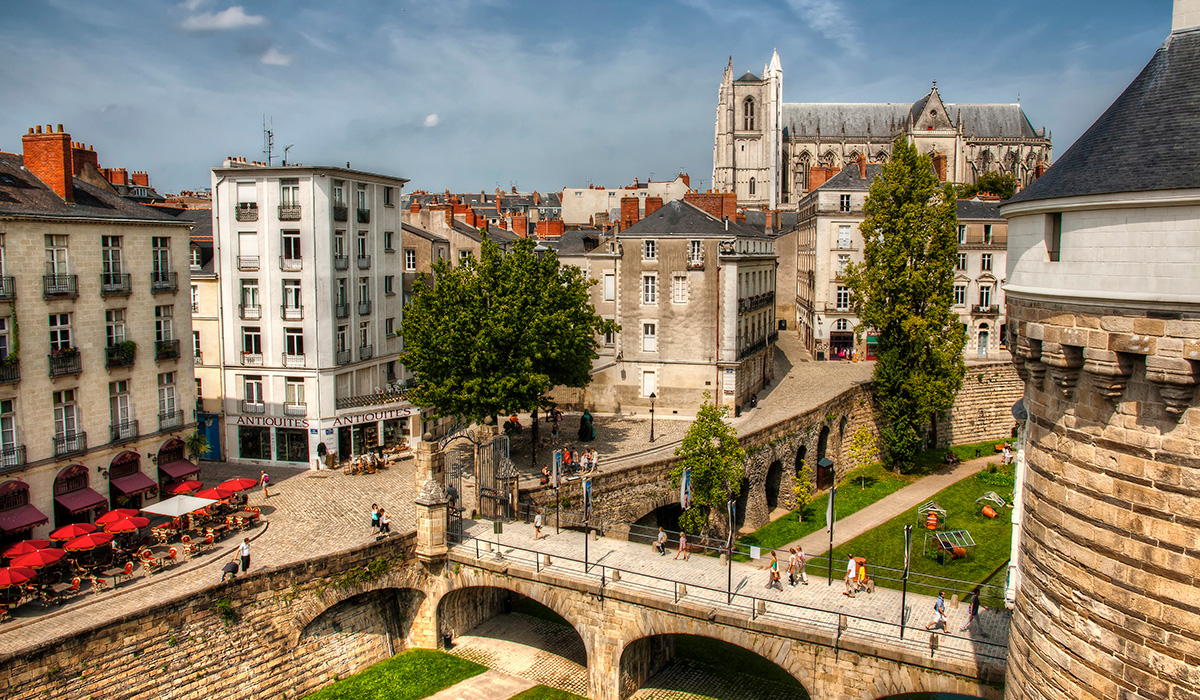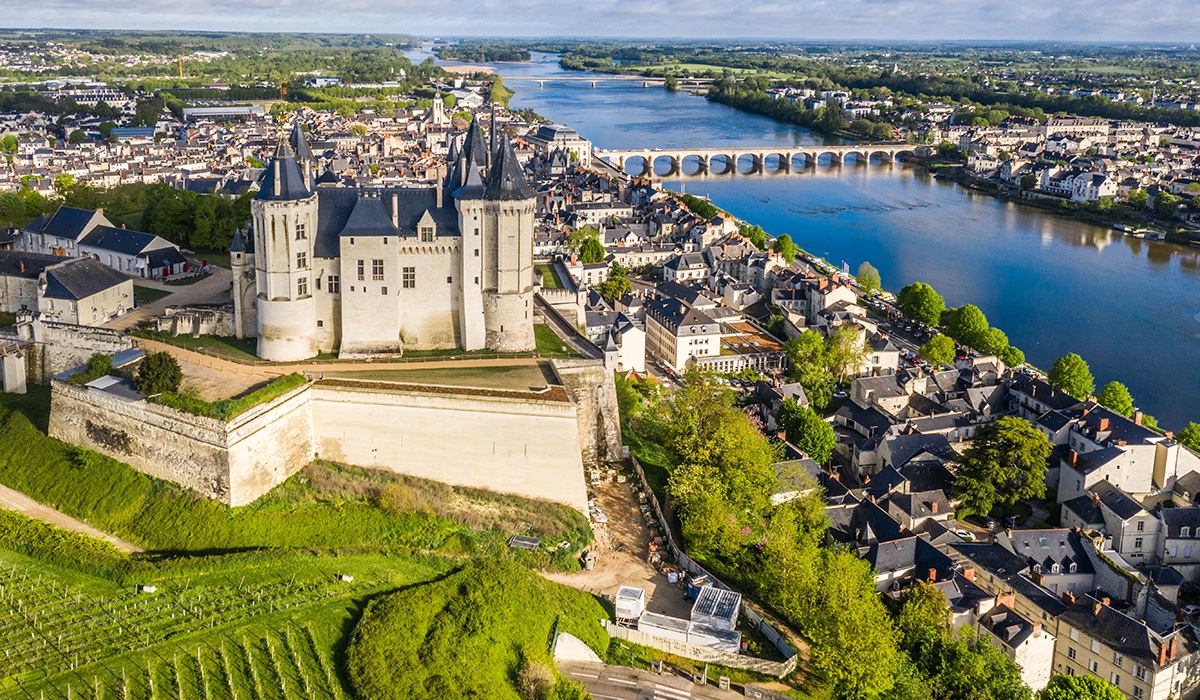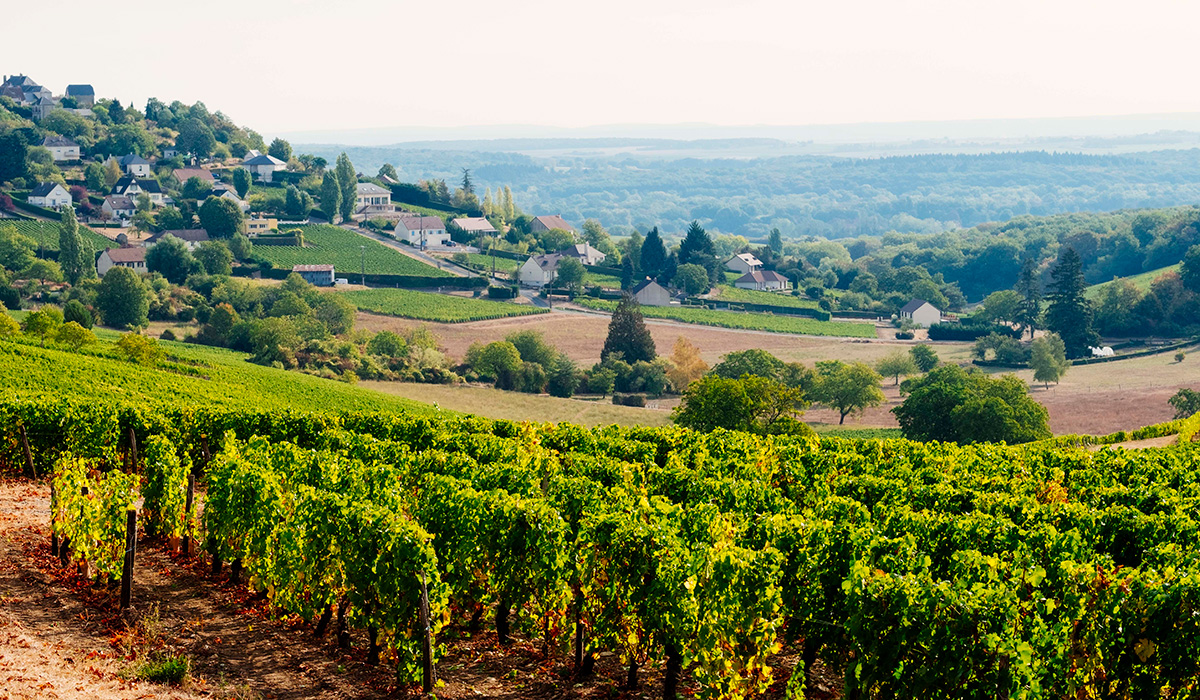It seemed like a good idea at the time – a four-day wine trip (read: whirlwind), taking in views of France’s longest river, the Loire, starting on the east coast and ending up in the region’s most famous appellation, Sancerre, which is home to its most recognisable variety,
sauvignon blanc. The result? Intensive and rewarding.
But if you’re yet to appreciate the beauty of the Loire Valley, more time is required, which is why I recently revisited the region that spans 800 square kilometres and is abundant with vineyards, cherry orchards, forests and darling villages dotted with castles. This is partly why UNESCO added the area between Sully-sur-Loire and Chalonnes to its World Heritage Sites list in 2000. I also came back for the wine.
But if you’re yet to appreciate the beauty of the Loire Valley, more time is required, which is why I recently revisited the region that spans 800 square kilometres and is abundant with vineyards, cherry orchards, forests and darling villages dotted with castles. This is partly why UNESCO added the area between Sully-sur-Loire and Chalonnes to its World Heritage Sites list in 2000. I also came back for the wine.
-
The key regions of Nantes (pictured 1/3 above), Anjou/Saumur (pictured 2/3), Touraine and Centre-Loire, which take in Sancerre (pictured 3/3) and Pouilly-Fume, each deserves its own story, thanks to the dedicated vignerons and diversity of soils, climate and grape varieties. These include cabernet franc, sauvignon blanc, muscadet, chenin blanc and pinot noir, plus rosé and sparkling styles. Each one would fill several volumes, so instead, let me offer a few of my favourite things, starting in Nantes.
-
Nantes
-
Saumur/Chinon
-
Sancerre/Pouilly
Once the capital of Brittany, Nantes is a great place to start a Loire trip as it has an international airport, and the town encourages plenty of that most French of pastimes – flaneuring, or leisurely strolling. Soak up the atmosphere with a crisp and fresh muscadet, an ancient variety also known as melon de Bourgogne, with DNA links to pinot noir and chardonnay. Nantes is 95 per cent white wine territory and dominated by this ultra-dry variety, with most grown in the Muscadet Sevre-et-Maine appellation.
Armed with an appointment – advisable for any winery visit in France – my first stop is Domaines Landron, which offers a suite of terrific muscadets crafted by second-generation vigneron Jo Landron. A young muscadet called Amphibolite, made in stainless steel tanks to retain its vivacity, is refreshing, with hints of iodine and lemon salts, plus floral and linear. More complex is Le Fief du Breil, which Jo recognises as a cru because it’s from a single vineyard planted to 40-year-old vines.
Next up is Domaine de L’Ecu, once owned by the legendary Guy Bossard. Frederic Niger learned from the muscadet master before taking over the estate in 2012. The wines are compelling and detailed, each a gateway to the vineyard where the fruit grows, and they will change any perception about muscadet being only a cheap and cheerful wine.
Along the roads here, the limestone cliffs of Saumur loom large, carved into some ancient cave dwellings. The Troglodyte Village of Rochemenier is now a museum revealing insight into how people lived in such proximity, from the 13th century to the 1930s. It’s worth noting that the Loire comprises 44 per cent white wine, 24 per cent rosé, 19 per cent reds, and 13 per cent sparkling. Outside of Champagne, the Loire is the biggest producer of bubbles, and Saumur is the spot for a glass or two. Saumur brut can be pink or white, and there’s cremant de Loire aplenty at Ackerman winery. Tuffeau, or porous limestone, was quarried to make many of the chateaux, and what was left behind is seven kilometres of caves forming the cool cellars of Ackerman, founded in 1811 and now part of the largest Loire negociant with a new name – Orchidees, Maisons de Vin. While the tasting room is modern, a guided tour of the old cellars is essential. Everything has been set out brilliantly with video links, artworks and historical paraphernalia.
Forty kilometres east is Chinon, perched above the Vienne River – a town dripping with history. It’s also home to beautiful and fragrant cabernet franc. A visit at Domaine Bernard Baudry turns out to be one of the best, thanks to Bernard’s vigneron son, Matthieu. While he has worked in California and Australia, his heart is firmly in Chinon, where the domaine produces 90 per cent cabernet franc with 10 per cent chenin blanc. With each wine displayed on glass boxes filled with the soils of the vineyard, Matthieu talks about the influence of each one, such as Les Clos Guillot on clay and limestone, and La Croix Boissee off white chalk soils. Both are wonderful and distinct expressions of cabernet franc.
Fundamental to the Loire’s landscape is its disparate soils – schist and slate, granite and gneiss, clay and limestone, plus flint. The latter three form the unmistakable hills of Sancerre and Pouilly-Fume, planted to its distinctive sauvignon blanc. There may be plenty of uninspiring bottles produced, but if you’ve come here to be enlightened, you will be. Some wines are breathtaking in their complexity, with a sheen of acidity that keeps them energised and long-lived.
On the right bank of the river, the Pouilly-Fume appellation and Domaine Didier Dagueneau go hand in hand. It is now run by son Louis-Benjamin, following Didier’s untimely death in 2008. Didier put a spotlight not on sauvignon blanc, but on his patch of soil, low-yielding vineyards and what they reveal. This is all part of terroir, which the best producers embrace. Five minutes away is Domaine Jonathan et Didier Pabiot, an organic farmer making excellent terroir-driven wines, such as Predilection. This is a wine made from the best parcels that Jonathan hand-harvests, and there’s not much of it. All these wines make me hungry, so lunch beckons at Le Petit Berry, a bistro next to the Loire River where the food is rustic, regional and appropriately seasonal.
As for the medieval town of Sancerre, it is magnificent. Built atop a 312-metre hill, the panorama across vineyards and woods is breathtaking. Its wine appellation has many highlights. The vineyards are strewn with fossilised shells and sea creatures – a reminder this area was once an ocean. Such sites form the basis of some distinguished terroir, and three of the finest exponents are Alphonse Mellot, Domaine Vacheron, and Francois Cotat. Cotat produces tiny quantities of flavoursome, breathtaking Sancerre that ages superbly. Vacheron’s Sancerres are thrilling; as fine and pure as any great white Burgundy. And Alphonse Mellot produces wines that are all about elegance and drinking pleasure. It’s no wonder leaving Sancerre and the wider Loire Valley proves so difficult.
Jane travelled to the Loire as a guest of Loire Valley Wines, and again last year of her own accord. Most featured producers are available in Australia.
This article is an edited extract from the February/March issue of Halliday magazine. For more features on international wine regions, sign up today.








